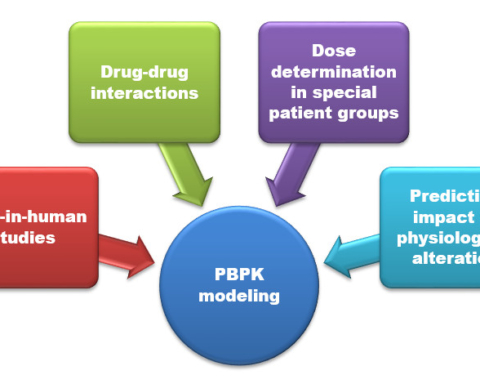Standard Operating Procedure, in short, SOP, is at the heart of operations in the Bio-pharma industry. It is a necessity in a strictly regulated industry like pharmaceuticals, which we all know. How far is it a necessary pain? ‘Aye, there’s the rub’ (to quote Shakespeare).
Probing questions
In my assignments covering consulting, training and providing software solutions to the Bio-pharma industry, I have faced a lot of questions. Most of them have been predictable and conventional. But some are not. Let me put forth one set of such off-beat questions. Because, though they are off-beat, seemingly irrelevant, yet, they strike at the heart of understanding SOP. For, these, rather innocuous questions address not just the letter of an SOP, but also its spirit.
What is the differences between Process and Procedure?
Are these terms interchangeable, meaning, can one be substituted by the other without loss of implication?
My long involvement in the ‘Process’ domain, since its emergence as a force to reckon with in the management world in the mid-1990s, has taught me a couple of things. Firstly, that pundits don’t agree upon any fixed definition of these terms, their precise differences, and that, opinions differ. That’s the bad news. However, here’s the good news too. My intense interaction with Colin Coulson-Thomas, one of the doyens of Process Engineering and a best-selling author, opened up a new dimension of thinking in this regard. “Don’t get caught up in semantics,” said Coulson-Thomas. “There is too much of jargon, in every industry. Instead, try to explain things in simple words, and you’ll find insights coming alive.” I will try to do the same here.
When we design a process, be it testing a raw material, or transferring product from the reactor, we ask three fundamental questions:
- What is to be done?
- Why it needs to be done?
- How is it to be done?
Mark the sequence of the questions.
It is important that we keep hammering the first two of these questions – what and why – however obvious they seem, till the answers are crystal clear, and articulated succinctly in written words. Important here, is that the answers are in crisp, written words.
In the context of an SOP, the answer to “what is to be done” and “why it needs to be done” can be found in the Minutes of the Meeting (MoM – or by whatever name they are called as in an organization) preceding the creation of an SOP. This is the meeting where it is decided that an SOP needs to be created (or a new version of an existing SOP is needed), why, and who all would be involved. Though a strict auditor can demand to see the Minutes of such a meeting related to an SOP, many organizations do not keep a clean record of MoMs.
There are umpteenth instances recorded in US-FDA audits where, in a bio-pharma facility being audited, the respondents fail to answer the auditors’ simple question – “Why are you doing this?”. The person carrying out a procedure as outlined in the SOP is not supposed to be a dumb robot, but an intelligent and informed member of the team producing a bio-pharma product. And the auditors expect it that way. This is at the root of Quality System.
The “how it is to be done” is elaborated in the SOP itself. Though, “What is to be done” part is very briefly stated in the ‘Objective’ section of an SOP, the rest of it is devoted entirely on articulating “How it is to be done”.
How, precisely, are we going to do what we intend to do? This, “How” is primarily procedural. And look, in a wink, we have come to the term, “Procedure”, naturally, without trying to define it.
The Procedure, here, is indeed part of the Process, but it is important to make this distinction.
I never tire of stating, at the cost of repetition, that a comprehensive Quality System must articulate all the three questions: What, Why, and How.
It is now easy to see that just a stand-alone SOP document, per se, does not suffice this requirement. The following 3 components need to perform together, like in an orchestra:
- Minutes of the Meeting (MoM)
- SOP
- Training (associated with that SOP)
Culture and moments of truth
We often tend to undermine the influence of culture in our daily activities. In the context of SOP, the organizational culture. This culture seeps into the paradigm of our thinking, seeing, hearing, talking and most importantly, doing or not doing something. Paradigm is like the lens through which we perceive the external world, and much like the lens in our eye, we can’t ordinarily see it.
Why are we talking about cultural paradigms here, in an article on SOP? Because, while SOP is primarily a document of procedure, it is the cultural paradigm of the organization which makes sure that the procedure is understood and followed in its letter and spirit.
And the management of SOPs gives an excellent opportunity, as a tool, to tune the organization to a high quality one. A chance, a prospect, not to be missed. This is where the usual pain associated with SOPs can be transformed to the high-energy pleasure of an organization which prides itself on being of great quality. A great organization.
Mark my word. While SOPs relate to procedures and processes, it is the organization as a whole which gains quality status. And here is the crux, which, unfortunately, many organizations miss. That, SOPs cannot be treated in isolation of the organization. High quality processes cannot be achieved with less-than high-quality organizational culture.
With a bit of effort, many of us can recollect our trepidation we felt before the school board examination. Today, standing at a safe distance of time from those exam days, it becomes easy to analyse, what caused such anxiety?
The basic fear stems from the uncertainty of: what questions will be asked?
The situation is not much different before an audit.
- What will they look for?
- What questions will they ask?
- Whom will they ask?
This is where a methodical SOP system residing within the context of a comprehensive Quality System helps. It reduces the anxiety of an organization, as well as makes it better prepared to face audit. After all, audit is where the rubber hits the road. The moment of truth. It is worthwhile to weed the pain out.
Look and Feel
It is all very well to talk in a general way about the need to have a comprehensive SOP System. But what comprise such an SOP System?
The figure below provides a compact view of an SOP System.
Without getting into detail, which demands a separate article altogether, it is suffice to say that having all the components, as shown in the figure above, is both necessary and sufficient as condition for a thorough SOP System.
These components do not operate in silos, but are inter-connected in a seamless way.
Some SOP System available are complicated to implement and use. While choosing a system, look for a balance between functional richness and ease of use. Thankfully, such systems are also available. And they are affordable too.
In conclusion, a good SOP System not only helps the organization to strengthen its functional quality objective, but can be a strategic tool to take the organization, as a whole, to another level of operational grid altogether. It is worth striving for.
About the Author
Ashis Dutta is the Director of CCE Software in Bangalore, India, and Fredonia, NY, USA. He specializes in GMP / FDA compliant solutions for Bio-Pharma industry. His moto is to make compliance affordable and easy-to-use without compromising on the rigor of Quality Systems. He can be reached at ashis[at]ccesoft.com and ashisdutta[at]gmail.com








